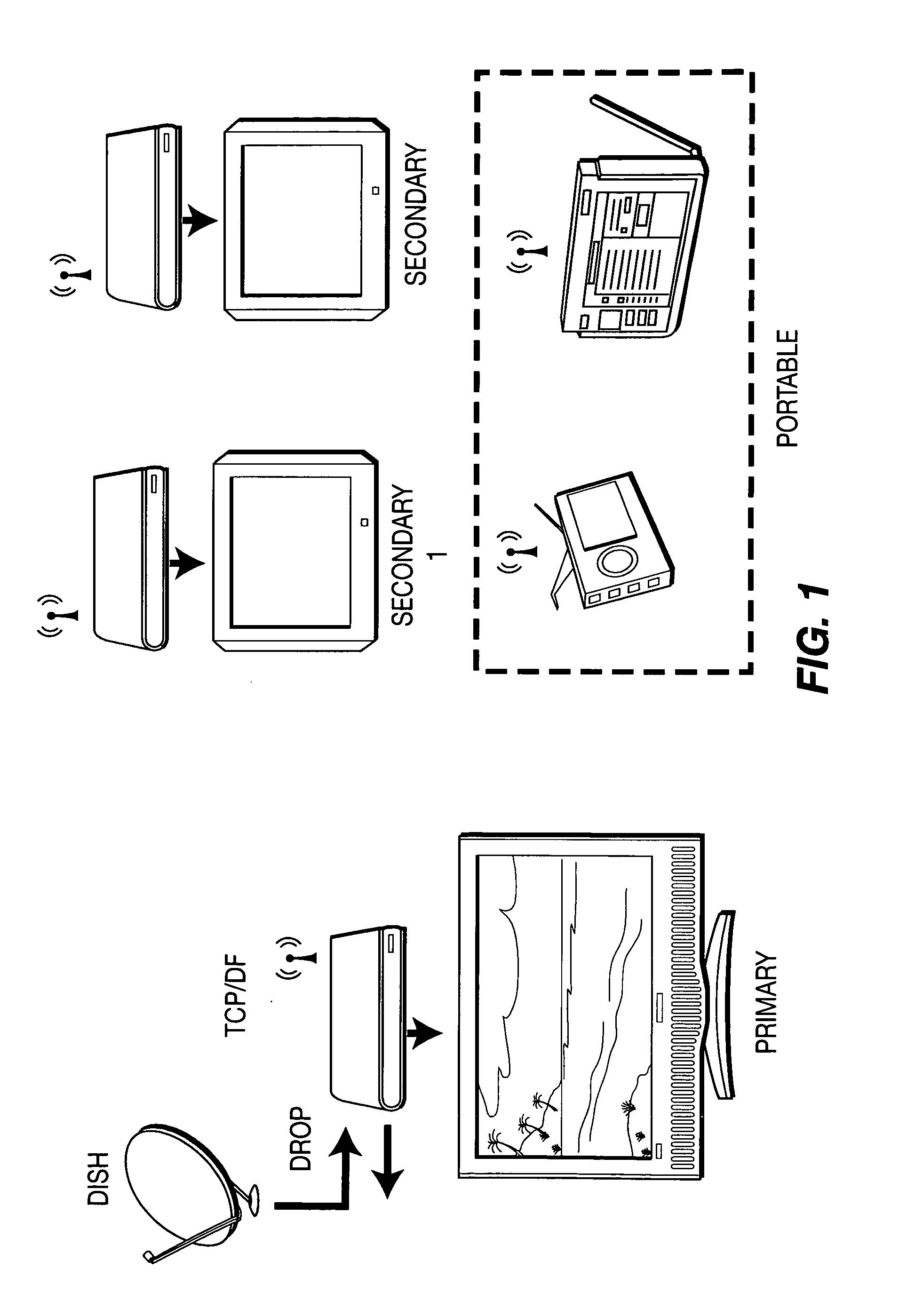Channel Selection Method For Wireless Networks
a wireless network and channel selection technology, applied in the field of wireless local area networks, can solve the problems of affecting quality of service, and the interfering nature of wireless networks, and achieve the effects of rapid and significant increase of wireless network deployment, quality of service, and impact on the throughput of wireless networks
- Summary
- Abstract
- Description
- Claims
- Application Information
AI Technical Summary
Benefits of technology
Problems solved by technology
Method used
Image
Examples
Embodiment Construction
[0023]Emerging technologies such as orthogonal frequency divisional multiplexing (OFDM) and multiple in-multiple out (MIMO) make bandwidth demanding multimedia applications over wireless channels possible. In IEEE 802.11n, throughput over a 20 MHz or 40 MHz channel can reach 130 Mbps or 300 Mbps respectively. Transport of a high-definition video stream may need 15 Mbps to 20 Mbps bandwidth. A typical in-home wireless video distribution system streams two to three HD / SD TV and VoD programs from a master set top box (STB) to slave set top boxes as shown in FIG. 1. For single family home deployments, if the distances between homes are great enough, the number of interfering neighbors may be smaller than the total channels available. It would, thus, be possible for the in-home wireless network to find an interference free channel.
[0024]This may not be the case for multi-dwelling unit (MDU) deployment as shown in FIG. 2. One AP and its associated STAs form a basic service set (BSS). Diff...
PUM
 Login to View More
Login to View More Abstract
Description
Claims
Application Information
 Login to View More
Login to View More - R&D
- Intellectual Property
- Life Sciences
- Materials
- Tech Scout
- Unparalleled Data Quality
- Higher Quality Content
- 60% Fewer Hallucinations
Browse by: Latest US Patents, China's latest patents, Technical Efficacy Thesaurus, Application Domain, Technology Topic, Popular Technical Reports.
© 2025 PatSnap. All rights reserved.Legal|Privacy policy|Modern Slavery Act Transparency Statement|Sitemap|About US| Contact US: help@patsnap.com



